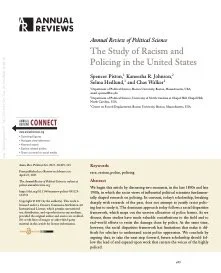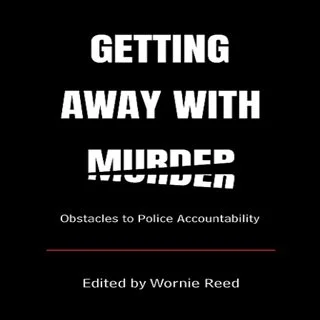By Mina Kim, PhD; Phillip Atiba Solomon, PhD; Justin M. Feldman, ScD
Introduction In the US, injuries caused by law enforcement are a public health concern and driver of racial health inequities.1-4 While fatalities have attracted considerable public attention, nonfatal injuries inflicted by police are far more prevalent. Analyzing nonfatal injury trends can therefore help to answer critical questions about how populations experience policing, including whether the major advocacy efforts related to racial inequity in policing occurring from 2014 to 20215 coincided with changes to rates of legal intervention injury overall or by racial and ethnic group. Methods This repeated cross-sectional study analyzed publicly accessible, deidentified data from the National Electronic Injury Surveillance System—All Injuries Program (NEISS-AIP), a nationally representative sample of US hospital emergency departments (EDs), for the period 2004 to 2021. Local ethics review and informed consent were not required in accordance with the Common Rule. This study followed the Strengthening the Reporting of Observational Studies in Epidemiology (STROBE) reporting guideline for cross-sectional studies. In NEISS-AIP, legal intervention includes an injury or poisoning caused by on-duty police or other legal authorities, including private security guards. NEISS-AIP offers an advantage over administrative claims data, which underreport substantial shares of legal intervention injuries.6 We used NEISS-AIP’s predefined race and ethnicity categories, which were derived from patient medical records (eAppendix in Supplement 1). All analyses were performed between September 2024 and July 2025 using R software version 4.2 (R Project for Statistical Computing) with the survey and mgcv packages. We fit quasi-Poisson models for injury rates, treating year as a spline (for visualization) or as linear (to assess trends quantitatively), using parametric bootstrapping to construct CIs. We deemed any 95% CI for the linearized trend line that included the null value to be inconclusive as to its directionality, but we still interpreted the confidence limit as the bounds within which the trend was expect to fall. Additional methodological details are available in the eAppendix in Supplement 1.Results Between 2004 and 2021, a total of 1 500 577 ED visits (95% CI, 1 073 632-1 927 522; 85% [95% CI, 60% to 100%] men; mean [SD] age, 33 [12] years) in the US were for legal intervention injuries. Among patients with race and ethnicity data, 42.3% (95% CI, 21.2% to 63.4%) were African American or Black, 13.9% (95% CI, 5.4% to 22.3%) were Hispanic or Latinx, and 41.1% (95% CI, 30.7% to 51.5%) were White. Most patients were treated and released, with only 4.3% (95% CI, 2.5% to 6.1%) requiring hospitalization (Table). Legal intervention injury rates for the US population as a whole remained relatively stable over the study period (Figure), with the 2021 rate at 92% (95% CI, 71% to 119%) the level of the 2004 rate. Over the study period, mean injury rates for African American or Black people were 5.3 (95% CI,4.6 to 6.2) times those of White people. Rates for Hispanic or Latinx people were 1.5 (95% CI, 1.2 to 1.7) times those of White people. While the point estimates for Black:White RR decreased by 6%, from 5.48 in 2004 to 5.13 in 2021, uncertainty was high, with the 95% CI ranging from a 42% reduction to 51% increase. For the Latinx population, the RR decreased from 1.94 in 2004 to 1.06 in 2021, corresponding to a 45% (95% CI, 12% to 66%) decrease.
JAMA Netw Open. 2025






